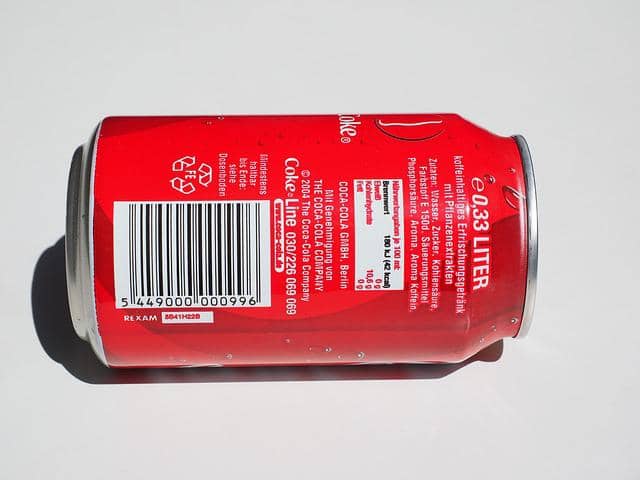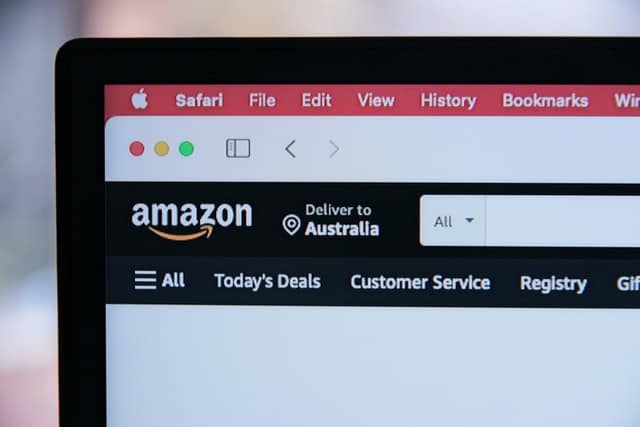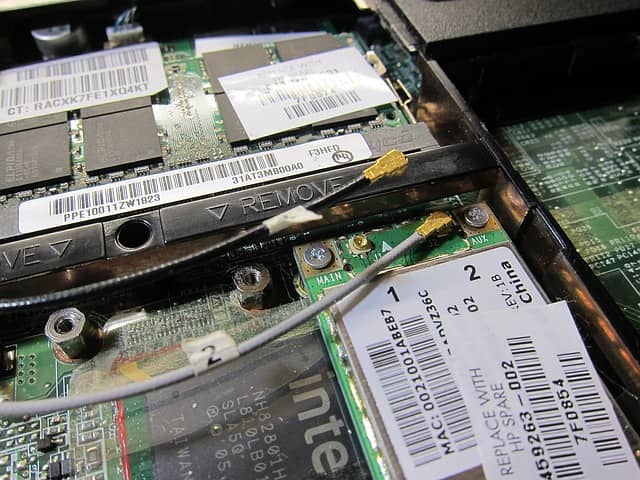SKU and UPC are two acronyms often used interchangeably. But, although they’re both methods of product identification and can use a barcode, they’re not the same and don’t serve the same purpose.
If you’re a business owner selling internationally, you’ll need to get familiar with SKUs and UPCs. These two barcodes will help you track inventory and sales, and retain ownership of a product as it moves through supply chains.
So, let’s take a look at this SKU vs. UPC comparison guide, discover their difference, and learn how and when to use each of them.
Here we go!

What Is SKU?
SKU stands for “Stock Keeping Unit” which is an alphanumeric code (containing both letters and numbers) companies use for internal organization such as managing and tracking inventory.
SKUs are typically 8 to 12 characters long (most contain about 10 letters and numbers).
This SKU code is assigned to a product variant based on a pre-defined formula or rules determined by the company itself. Usually, SKUs describe the product features.
For instance, let’s say the company is creating an SKU for a pink women’s shirt, size 4, from their July 2023 collection. They will build their SKU code following a formula similar to this:
[product type]+[gender]+[color]+[size]+[month]+[year]
So, the SKU could be something like “SH-F-PI-4-7-23”.
SKUs can come with or without a barcode for machine scanning. Additionally, these barcodes can be linear (traditional), QR codes, etc.

What Is UPC?
UPC stands for “Universal Product Code” which is a numerical code (comprised of 12 digits) that’s used to move a product through supply chains and at PoS. Unlike SKUs, UPCs remain the same no matter who sells the product.
Additionally, UPC codes are used in international retail and have to be purchased and licensed by GS1. As such, they’re permanent and universally recognizable once tied to a product.
The structure of the 12-digit UPC is as follows:
- Manufacturer code – first six numbers
- Product code – next five numbers
- Check digit – the last number
If you’re not in the US or Canada, you might want to use EAN instead of UPC. EAN stands for “European Article Number” and it’s the international version of the UPC barcode, with 13 digits instead of only 12.
Differences between SKU and UPC
Although both SKUs and UPCs can use barcodes, they aren’t similar at all. They look different, are obtained differently, and serve different purposes. Let’s look at the main differences between an SKU and a UPC code:
Purpose and Uses
SKUs are unique to the company or the retailers, while UPCs are unique to the product. So, the exact same product sold by two different retailers will have different SKUs but the same UPC.
That’s because SKUs are meant for internal use and identification that aids in inventory tracking or management. It has nothing to do with the supply chains or sales of the product.
UPCs, on the other hand, serve an external use. Every product that’s entering the retail chain and is going to be sold needs a UPC (or EAN) code.
Another difference in their application is that SKUs can be used for both products and intangible services. UPCs, on the other hand, are used for physical products only.
Finally, note that SKUs are applied to the billable product. So, if you bundle several products in one, the entire bundle will have its own, new SKU.
Character Composition
SKUs are comprised of 8 to 12 characters (letters and numbers), usually 10. This alphanumeric code can stand on its own or together with a barcode. These codes are customizable and set internally, without a fixed rule to follow. However, retailers usually set the numbers and letters according to different product features.
A UPC is a numeric-only code that always comes together with a barcode and it contains 12 digits or numbers. UPCs are made of a company prefix registered under GS1, a product code, and one check digit in the end.
Sourcing and Obtaining
SKUs can be created internally and don’t have a strict formula or rule regarding their structure. Each retailer can set up their SKUs however it’s most convenient for their type of products and nature of their business.
UPCs, on the other hand, have to be purchased and licensed by GS1, with a registered company prefix and an active status.
To make things clear, the manufacturer of a product usually obtains UPCs, allowing them to sell and buy wholesale, retail, on marketplaces, or internationally.
So, retailers usually get UPCs or EANs from the manufacturer and set SKUs on their own, internally.
Note that if you sell private label products, you’ll need UPCs for all unique variants manufactured.
Best For
If you have an Amazon FBA business or you’re an international eCommerce seller, you’ll definitely need both SKUs for inventory management and UPCs for selling and moving your product through the supply chain.
Using SKUs only is best for D2C brands and local sellers.
Using both UPCs and SKUs becomes a necessity if you want to sell on marketplaces or internationally.

SKU vs. UPC: Table Comparison
Here’s a visual comparison of an SKU vs. a UPC code for a better understanding of the two:
| Barcode Type | SKU | UPC |
| Characters | alphanumeric code (barcode optional) | numeric-only code (plus barcode) |
| Number of Characters | 8-12 letters and numbers | 12 numbers |
| Usage | internal use (inventory and sales tracking), can be used with products and services | external use (among retailers and supply chains), only for physical products |
| Features | unique for each retailer | the same across all retailers |
| Source | retailers generate and create it internally | manufacturers get purchased and licensed barcodes by GS1 |
| Best For | D2C businesses, internal or local sales only | marketplace sellers, international sellers, B2B sellers, wholesalers |
| Price | free | paid |
Should You Use SKUs or UPCs?
The SKU and UPC codes have different uses, so you’ll probably end up using both. You might have to choose between UPC and EAN (European Article Number), depending on your location, but an SKU code serves an entirely different purpose.
DTC brands that sell directly to customers without third parties involved in the selling process might not need UPCs. In this case, using SKUs only would suffice for tracking sales and inventory.
However, if you want to sell on popular marketplaces like Amazon, you will need a UPC.
Additionally, if you’re the manufacturer of a product and don’t issue a UPC barcode, someone else can claim the product and issue a license for it.
And, finally, if you plan to sell internationally, then you will definitely need UPC or EAN codes as part of your import procedures.
How to Create an SKU Barcode?
SKU barcodes are free to create. Some PoS systems will have built-in SKU generators. Additionally, there are many different free SKU generators to choose from online.
It doesn’t really matter what tools you use to create your SKU barcodes. If you have a limited amount of products, you can even create your SKUs manually.
When it comes to SKUs, the more important question is their structure. You need a sustainable, scalable structure that allows you to stay organized down the line.
Let’s take the following product as an example:
Product type: shirt
Style: V-neck
Color: pink
Season: 2023
Gender: female
Size: S
Purchase date: 08/2023
Now, let’s see some general formula examples companies would often follow for this SKU:
[product type]+[model]+[color]+[size]+[purchase/collection date] – SHI-V-PIN-S-23
[product type]+[gender]+[color]+[size]+[purchase date] – SHI-F-PIN-S-823
No matter the structure you choose, make sure it’s sustainable for future products you might add, and that you follow the same structure for all your products.

How to Get a UPC Barcode?
A UPC code needs to be purchased and licensed by the GS1 US – the American branch of the international GS1 organization.
Many third-party UPC providers sell UPCs online. However, we advise you to be cautious when buying UPCs from unknown sources.
Step 1: Calculate the Number of UPCs
First, you need to calculate the number of UPC barcodes you’ll need. Each product variant needs a unique UPC.
For instance, if you have 3 colors, with 3 sizes each, you’ll need 9 different UPCs (3×3=9).
Step 2: Register a Company Prefix
Then, go to GS1US or GS1UK to apply for a company prefix and register your product identifiers.
You’ll be asked to provide:
- Your legal company name
- Your contact information
- The number of individual items or UPCs
- Your payment information
Step 3: Pay and Get Your UPCs
Depending on the number of UPCs needed, you’ll be asked to pay the initial fee. Once done, you can access your membership, company prefix, and barcodes.
Note that the UPCs assigned to your products will remain the same throughout the product’s shelf-life. So, all retailers of the product will use the same UPCs.
Step 4: Renew Barcodes Yearly
Don’t forget that your GS1 membership expires in a year. So, you’ll need to renew your UPC barcodes yearly. However, for every succeeding year, the fee will be lower than the initial fee.

Best Practices for SKU and UPC
Now, let’s look at some best practices for creating and using SKUs and UPCs as product identifiers:
SKU Best Practices
- Develop and adhere to a set of fixed rules and a structure (don’t use random letters and numbers);
- Do an inventory audit to calculate the number of SKUs needed;
- Decide which product details you want the SKUs to contain (color, size, date of purchase, model, etc.);
- Use both letters and numbers in your SKU codes;
- Start the code with a letter for easier organization;
- Do not reuse old SKUs on new products – always assign unique SKUs;
- Do not overtake your manufacturer’s SKUs, always create yours internally (otherwise you’ll have a problem if you change the manufacturer, for example);
- Don’t use special characters such as #, $, %, or similar. Stick to numbers and letters;
- Don’t start the SKU with a 0 (many barcode readers might skip the zero in the front);
- If you have multiple inventory storage locations, add the info within the SKU for easier stock control across warehouses;
- Keep your SKUs short (8 to 10 characters is ideal);
UPC Best Practices
- Always get UPCs purchased and licensed by GS1;
- Retailers and resellers should ask their manufacturer if the product already has a UPC or EAN code;
- Avoid registering a UPC for a product that already has a UPC issued by the manufacturer;
- Having an EAN code instead of a UPC is usually not an issue;
- If you need to turn your UPC into EAN or a form requires 13 digits instead of 12, simply add a 0 in front of the numbers (zero is the number used for the USA in EAN barcodes);
- Selling internationally or on marketplaces like Amazon will always require a UPC barcode;
- If you sell locally and have a D2C business without the involvement of third parties, you might not need UPCs;
- GS1 UK is a more affordable option than GS1 US, and it doesn’t really matter if you use a UPC or an EAN code;
- Plan carefully the number of UPCs needed and leave space for new products since there’s no option to upgrade the number of licenses in the current membership once you’ve made a purchase;

FAQs about SKU and UPC Barcodes
And now, as always, let’s look at some of the most frequently asked questions on the subject of SKU and UPC codes:
Is a UPC Code the Same as a Barcode?
The UPC is a barcode, but it’s not the only type of barcode. A barcode is the general concept of bars and spaces or the machine-readable part used for product identification. As such, UPCs have a barcode, and SKUs also might use barcodes, although this is optional.
Can I Use UPC as SKU?
SKUs are for internal use and UPCs are for external use. It’s not recommended to use the product UPC as an SKU for many different reasons. In theory, you could, but that’s pointless.
First, because UPCs are numerical codes and SKUs are alphanumerical. Imagine how much easier it would be to locate and book the item numbered SHV4L22 in your warehouse vs. the item with the number 920173942711.
Secondly, UPCs are stuck to the product, so all resellers of that product will use the same UPCs.

Do You Need an SKU and a Barcode?
SKUs don’t necessarily need to have a barcode for machine-reading, but you can generate one if you want. Having a barcode allows you to use a barcode scanner for easier inventory management and listing.
If you refer to having a barcode as a synonym for a UPC, then you’ll need one if your product enters the supply chains and you plan to sell on marketplaces or internationally.
Is SKU the Same as a Serial Number?
No, it’s not the same. SKUs are practically inventory codes assigned to a product by the retailer, while serial numbers are assigned by the manufacturer. Each single produced item, even if it’s exactly the same variant and model, has a different serial number.
Serial numbers are very common with electronics and tech gadgets since it allows manufacturers to locate and isolate malfunctions in different devices.
How Do I Create a Barcode for My Small Business?
When we talk about creating our own barcodes internally, we typically refer to SKUs since those are the type of codes you can create on your own. UPCs are regulated and purchased from GS1 sources.
To create SKU barcodes, you need to use barcode software or an online barcode generator. Then, you need a printing service. You can print barcodes on your own using thermal printers since they’re the best for printing labels and barcodes.
Alternatively, use your standard laser or inkjet printers. They can also do a solid job if you want to save some money on third-party printing services.
If you work with a fulfillment center or a distribution center, discuss their involvement in helping you create SKUs and obtain UPCs.

To Wrap Up
The key point to take home with you is that SKUs and UPCs serve completely different purposes, although they can both come in the form of barcodes. SKUs serve for internal use such as inventory management, while UPCs are for external use and are needed each time a product is sold.
At NicheSources, we try to use logical and easy-to-follow SKUs as part of our inventory management services. With us, you can edit, add, and manage your SKUs with ease.
To test our services, you can get a free quote with no risks, payments, or obligations. Leave dealing with UPC and SKU codes to us!
Hopefully, this SKU vs. UPC guide has helped you understand their differences, and most importantly – when and how to use both.

